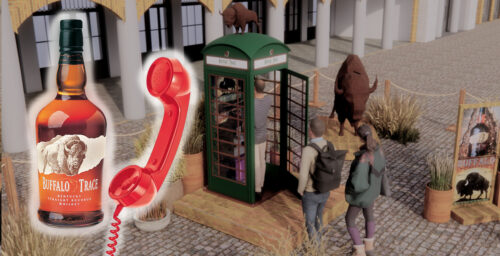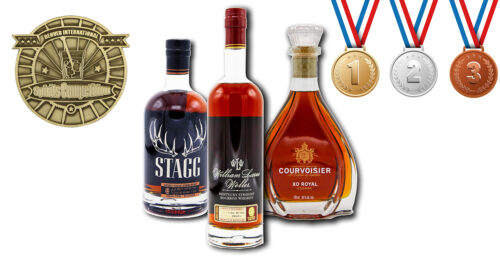Editor’s Note: This article comes to us courtesy of bourbon historian Michael Veach as a repost.
The 1960s and 70s were bleak times for whiskey distillers. Consumers had turned to products such as Vodka, Tequila and light beers for their beverages of choice. Whiskey has since made a huge comeback, led by Bourbon today, but it was actually Scotch whisky distillers that started the process of reclaiming the lead in the spirits market. The resurgence did not happen overnight rather it took over a decade to stop the decline in market share and another decade or so to bring about the growth we have in the 21st century.
It started in the late 1970s when the Scotch whiskey industry decided to export their single malt whiskies to the United States in force. They had a few single malts already in the market, but they had never really adequately explained to consumers how they were different and why they should pay more for them. As Scotch distillers started to explain the differences to consumers, they also showed people that they were versatile spirits that could be paired with food and cigars. These whiskies could be enjoyed for their unique styles and tastes. They hosted tastings of single malts and invited wine writers to come and report on their experience. Slowly, the word got out and people were hosting their own single malt tastings, pairing them with foods such as cheese and chocolate, as well as with cigars.
The Bourbon Industry saw what was happening and in the late 1980s, they created a “super-premium” category of their brands which included single barrel, small batch and extra-aged Bourbons. They also showed how these products could be enjoyed for their taste and hosted tastings, pairing their products with food and cigars. These super-premium brands began to catch on and also created an interest in the existing brands. With single malts, people started to look for the flavors found in the single malts and then locate them in the blended Scotch that contained that single malt. People would drink Cardhu and then purchase Johnny Walker because Cardhu is a major component of the Johnny Walker blends. The same thing started happening with Bourbons as people would drink a single barrel or small batch and wonder how the lower price product tasted as well. For example people would purchase a bottle of Basil Hayden and then wonder what Old Grand Dad tasted like in comparison, since it was the same mash bill as Basil Hayden.
The fall of the Berlin Wall and the end of the Cold War helped the export markets for all things American and that included Bourbon. Bourbon had been available in many export markets prior to the collapse of the Soviet Union, but that was mostly in countries with American military bases. Suddenly, new markets were open and people wanted American whiskey.

The next step in Kentucky was the Bardstown Bourbon Festival. It started in the early 1990s when some civic minded people in that town decided they needed to showcase their number one industry and to invite spirit writers and other influential people to a big gala focused on Bourbon. It was a success and the next year they decided to make it into a public festival based on the lawn of Spalding Hall, the home of the Oscar Getz Museum of Whiskey History in Bardstown, Ky. The public event was a success and people came to learn more about Bourbon. While at the festival, they started visiting the distilleries which offered tours. The distilleries started to host events that included subjects such as cooking with Bourbon and pairing Bourbon with cigars. The festival grew every year.
The growing interest in Bourbon was also fueled by the internet. Soon there were discussion forums about Bourbon, created not by the distilleries, but fans of Bourbon. People could go to these forums, such as Straightbourbon.com, and learn more about the process of making whiskey, the history of their brands and most importantly, read tasting notes and gather information about how each whiskey tasted and whether people thought it was a good value for the money. These discussions also fed interest in other whiskeys such as rye whiskey and corn whiskey. Soon people were also discussing Canadian, Scotch and Irish whiskeys. Online fans began to meet at the Bourbon Festival in Bardstown, making the festival grow in size, fueling the desire to tour more distilleries and helping to create a Bourbon Tourism industry. With the creation of Facebook and Twitter, the interest grew even larger. Soon, there were Bourbon clubs and societies being formed in cities and towns across America and in other countries, where these online fans could meet and share a drink of whiskey.
There was also a shift in the industry in response to the growing demand for distillery tours. Traditionally, the Kentucky Distillers Association (KDA) was focused upon lobbying the State and Federal governments, working on getting export markets opened and fighting increases in taxes. By the end of the 1990s, the KDA expanded their focus and started to support the growing tourism business in addition to their traditional duties.

The KDA created the Kentucky Bourbon Trail and encouraged distilleries to build visitor centers and offer tours. In Louisville, Bourbon tourism was also growing and the concept of the “Bourbon Bar” grew with it. More and more restaurants and bars increased the selection of Bourbons on the back bar and by the first decade of the 21st century, Bourbon became the theme for many restaurants, where they featured bars with more than 50 Bourbons and food created using Bourbon in the recipe. This trend was led by the Louisville restaurant Bourbons Bistro in 2005. Soon there were enough establishments in Louisville for Louisville Convention and Visitors Bureau to create the Urban Bourbon Trail featuring these restaurants.
It had taken over twenty years, but whiskey sales began to grow. By the second decade of the century, they began to grow faster than the distilleries had imagined. Other states saw what was happening in Kentucky and they changed laws that made it possible to build small craft distilleries in these States, which also led to a growing tourism business. The artisan distillery movement also fed the growth of other American whiskeys such as rye, corn and malt whiskeys. Laws were amended to allow distilleries to pour samples, make cocktails and purchase bottles at distilleries.
The resurgence of whiskey was not an overnight process. It took a lot of work on the part of the distilleries. It also took the invention of the internet and word of mouth advertising that came with instant communication on the internet. Most importantly, it took the support of people like the creators of the Bardstown Bourbon Festival, State and local tourism and even politicians to bring about this growth.

Photos Courtesy of Maggie Kimberl







